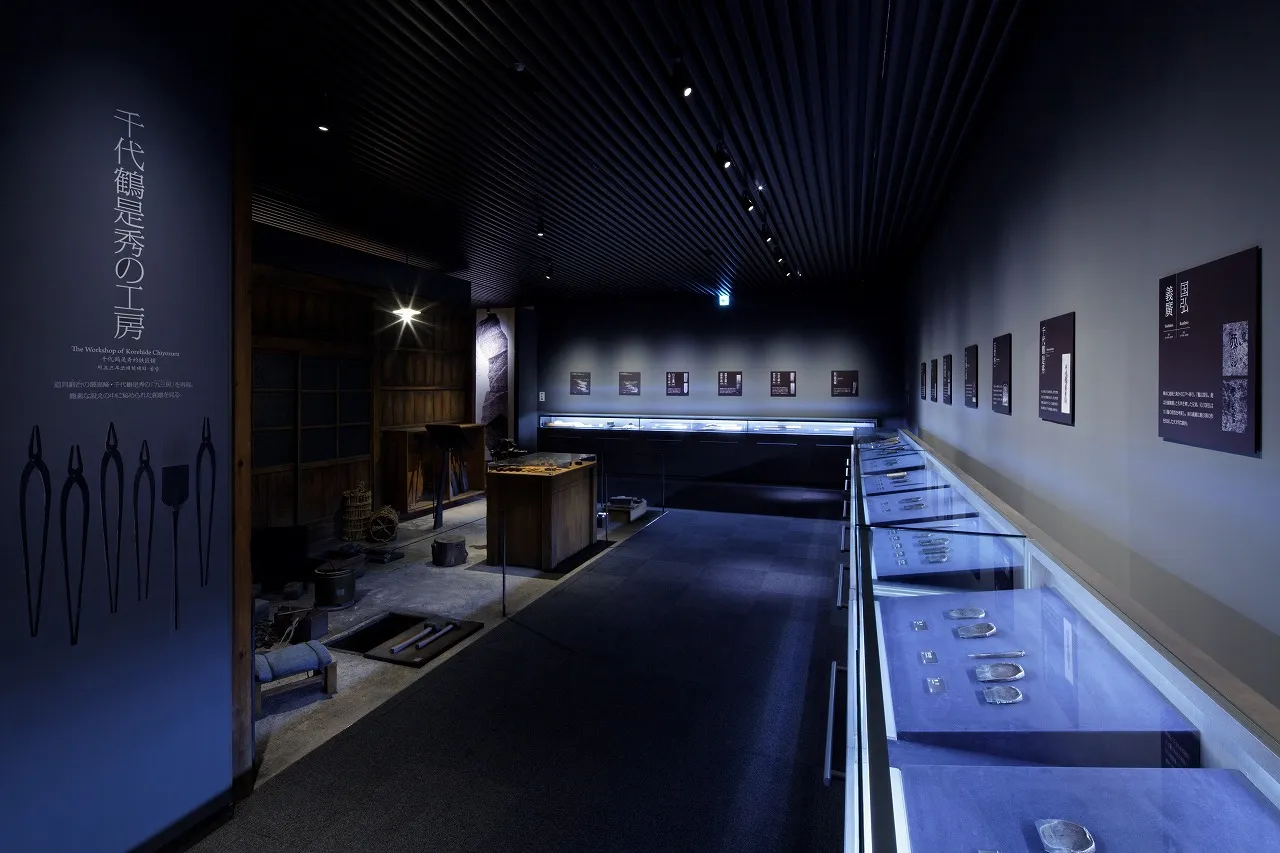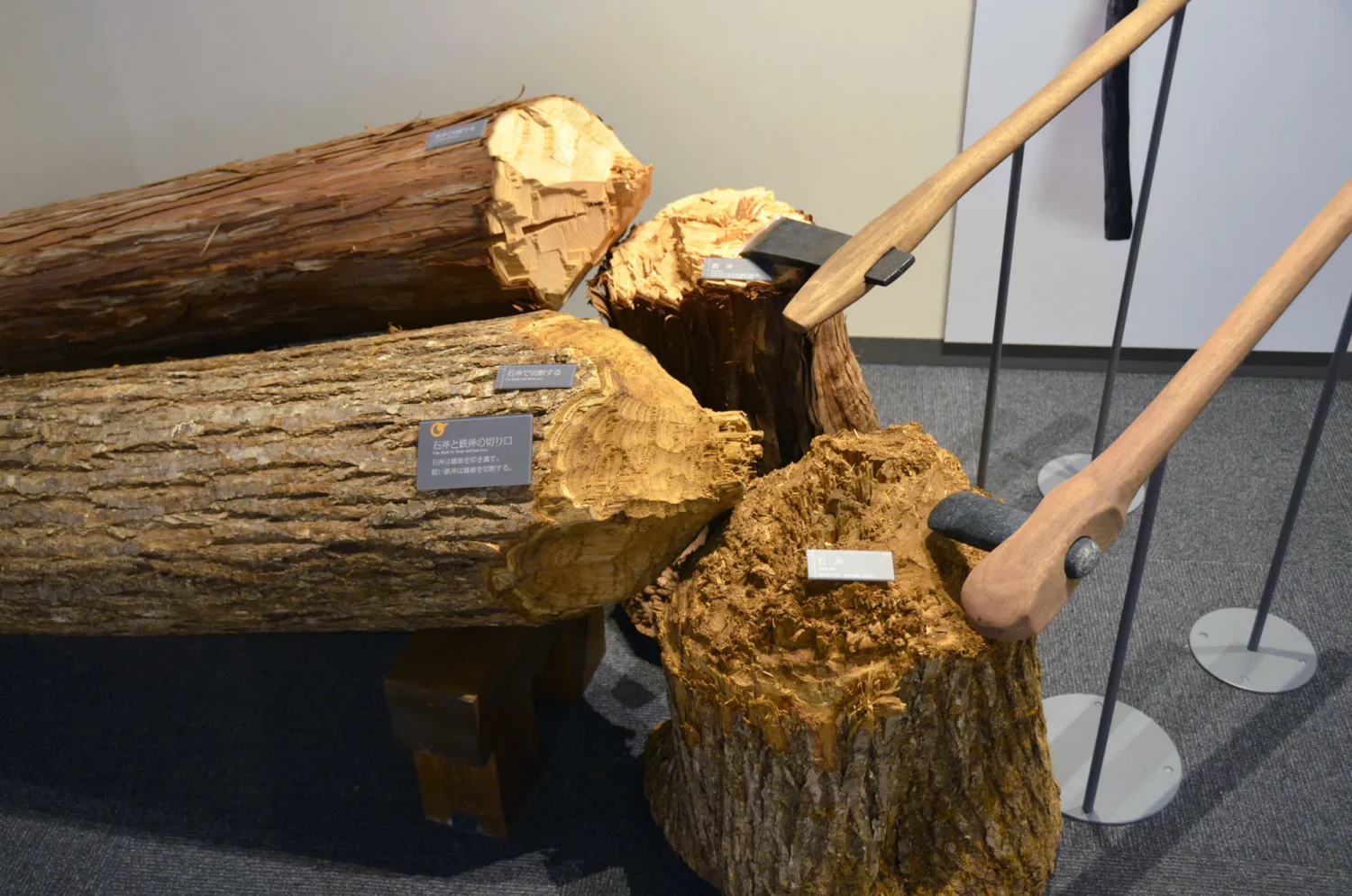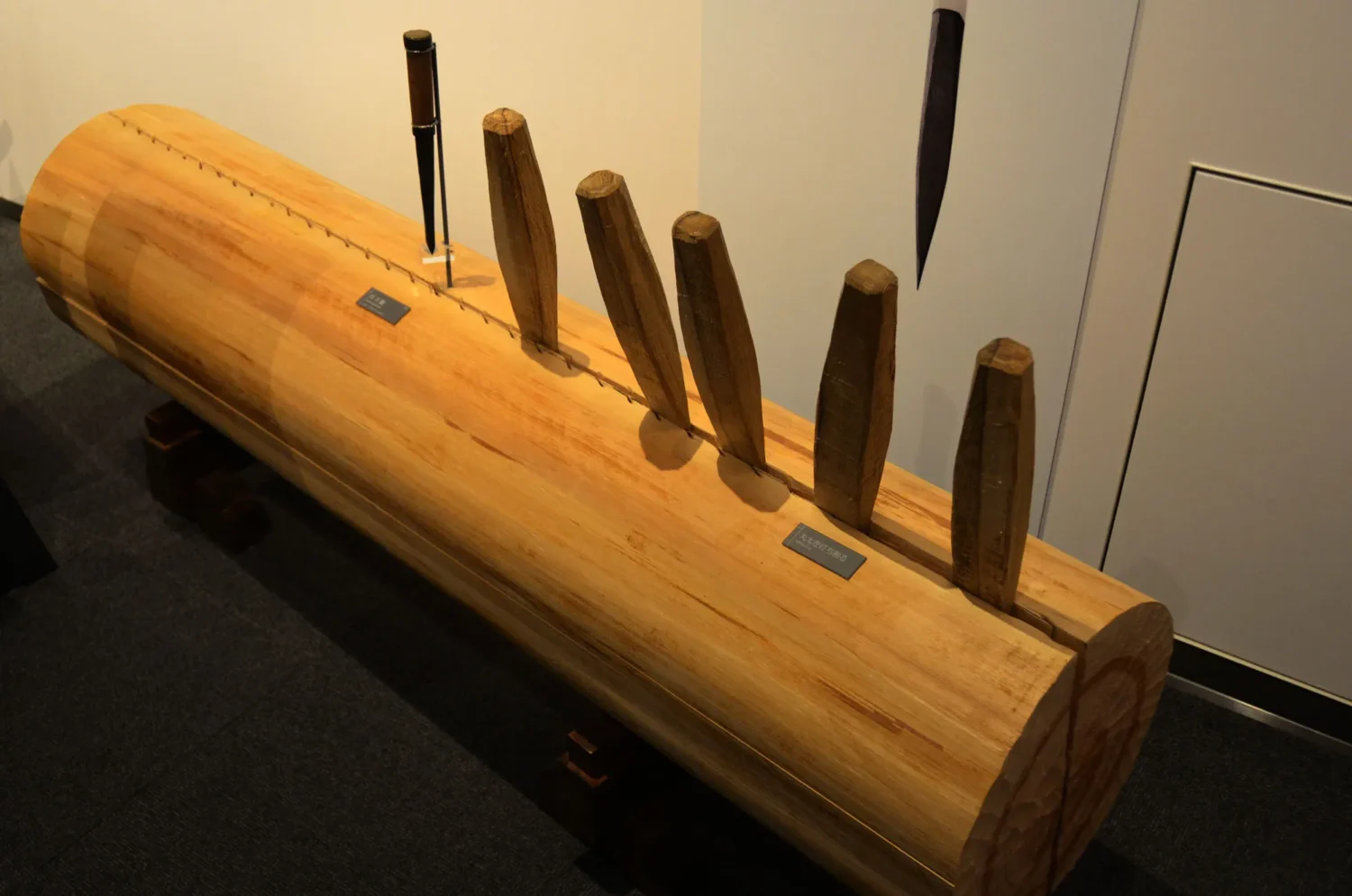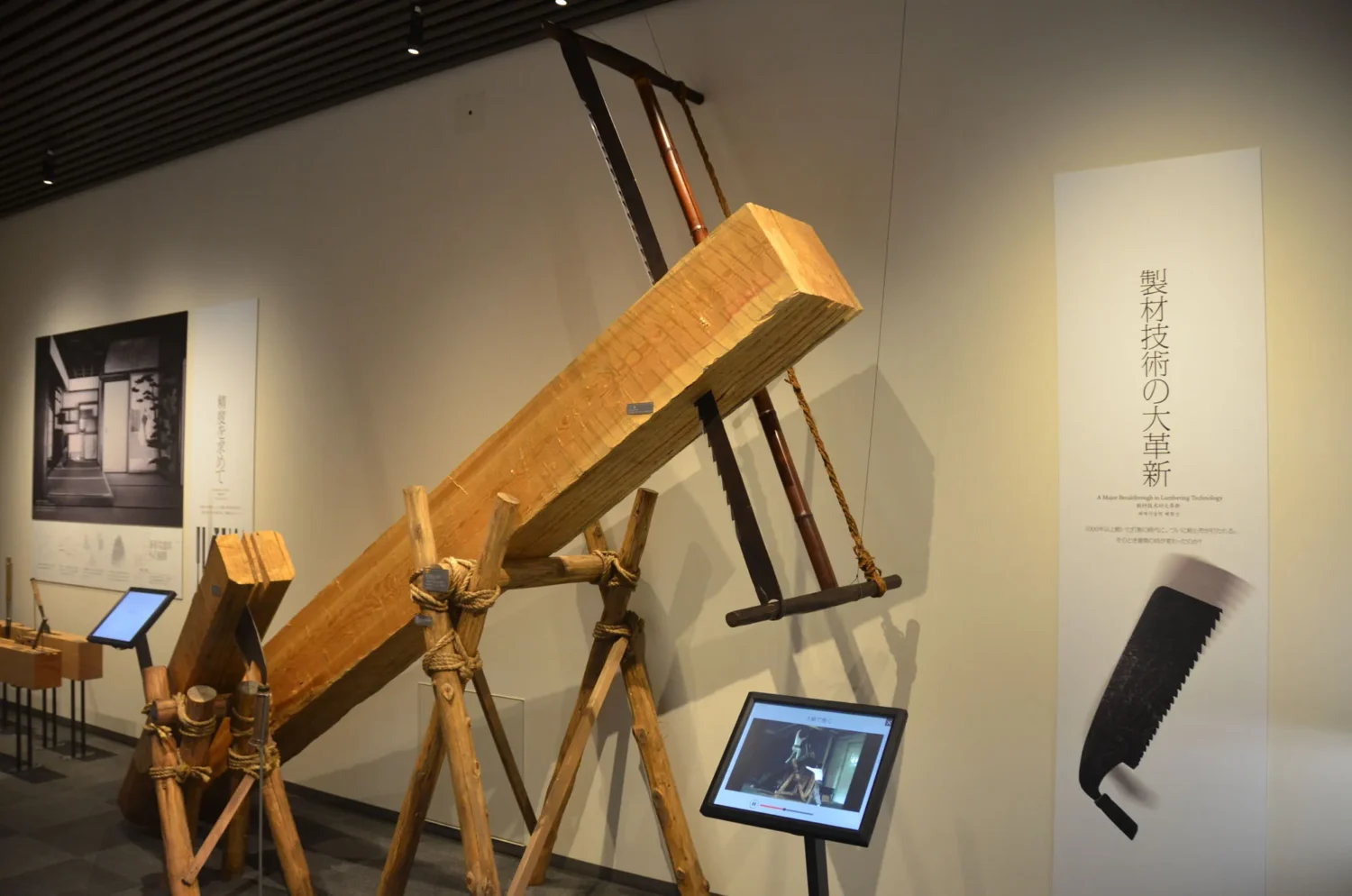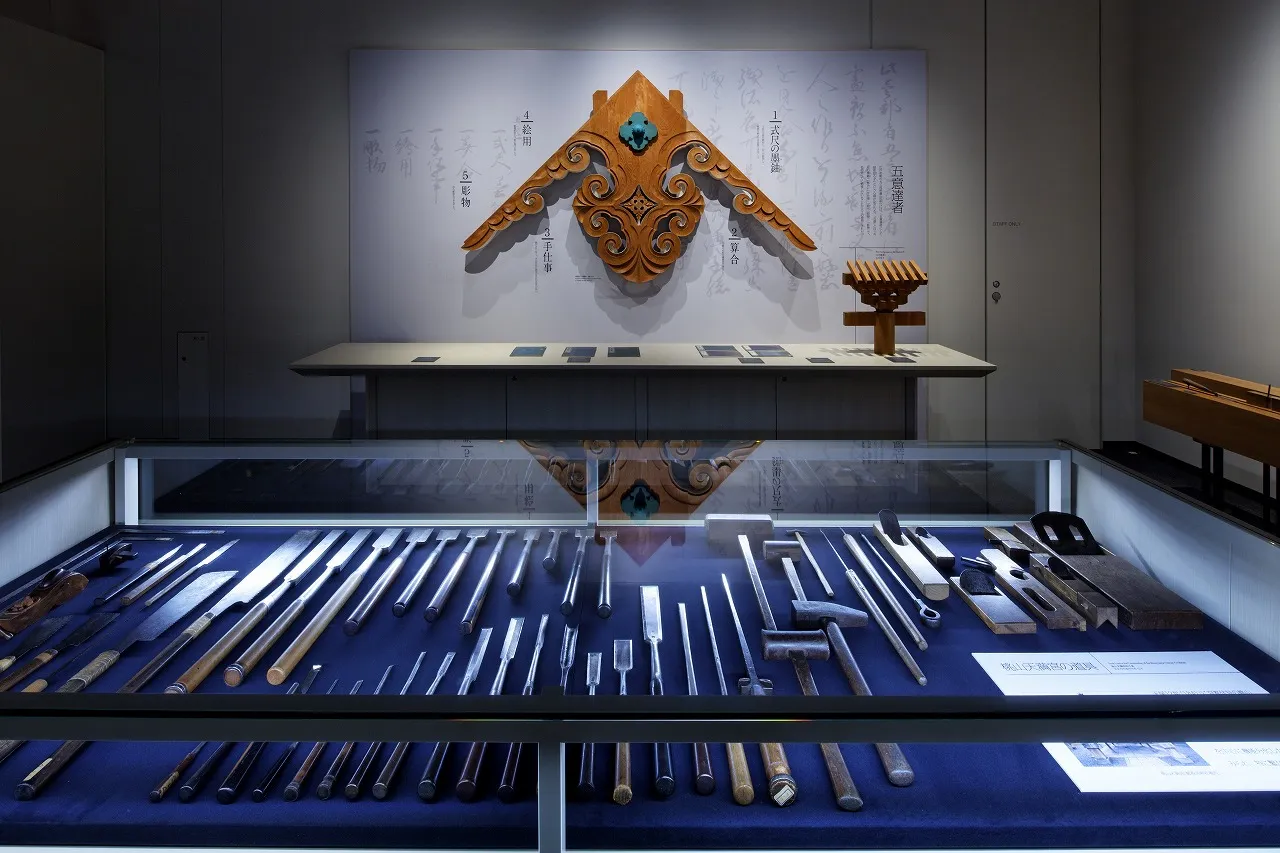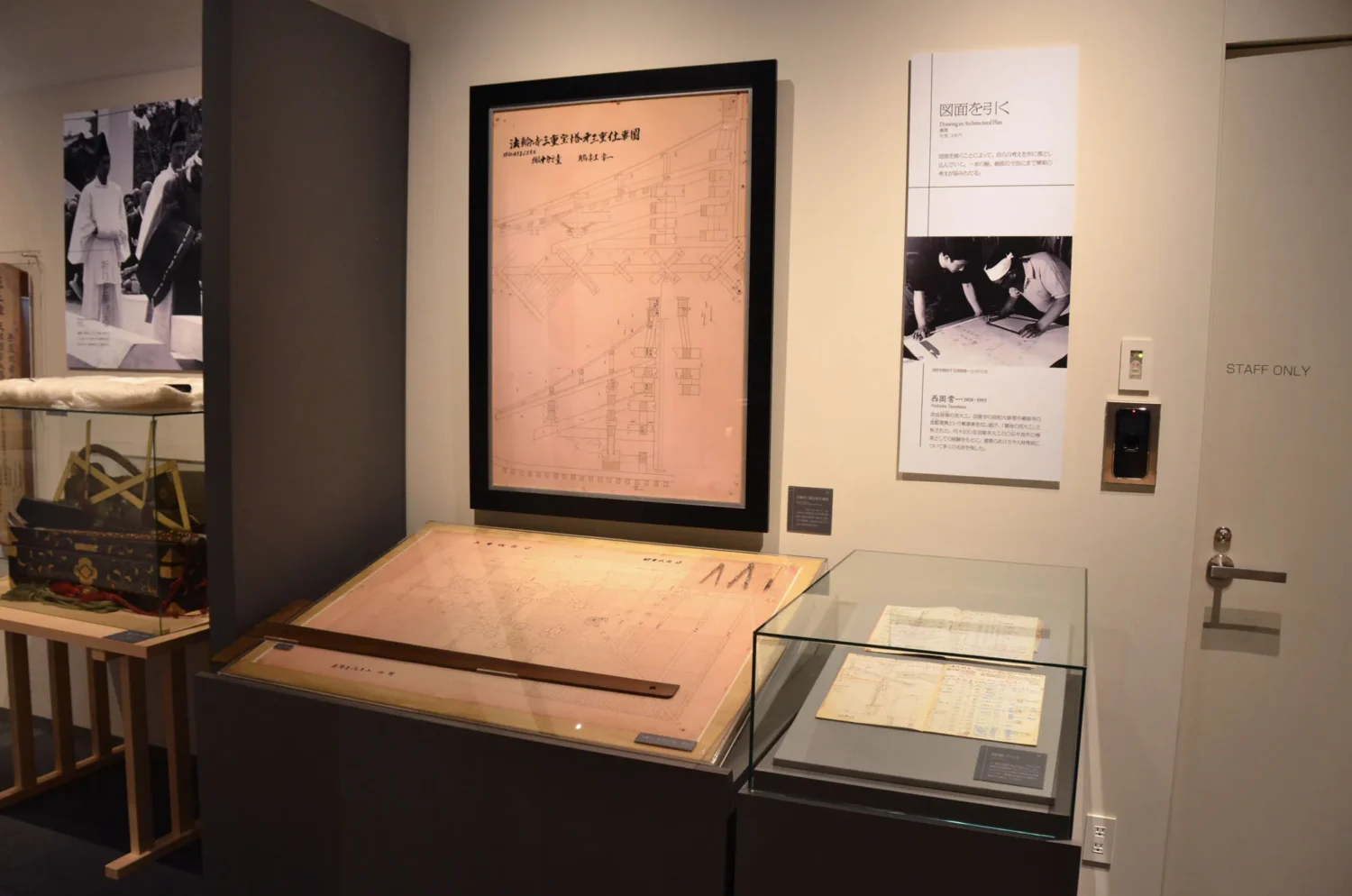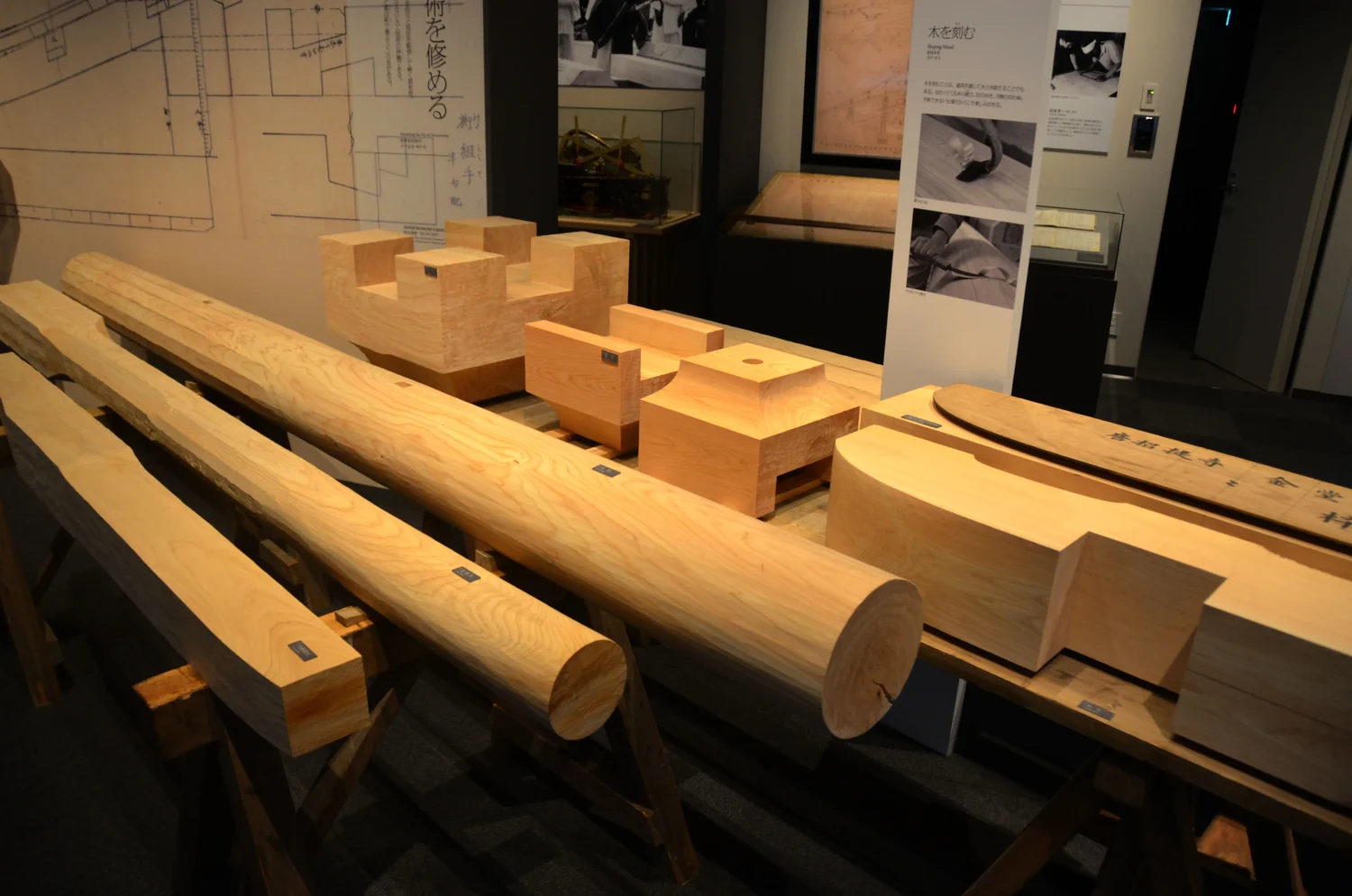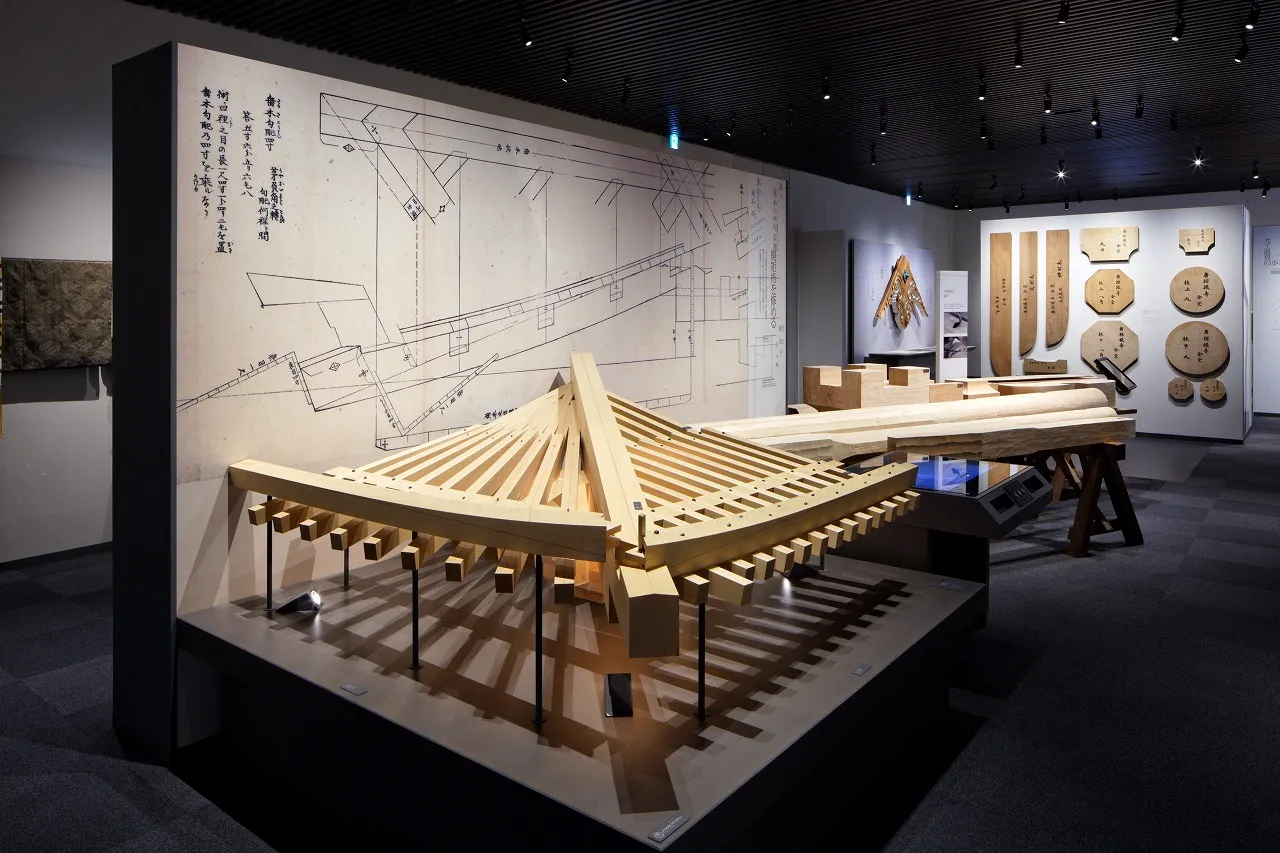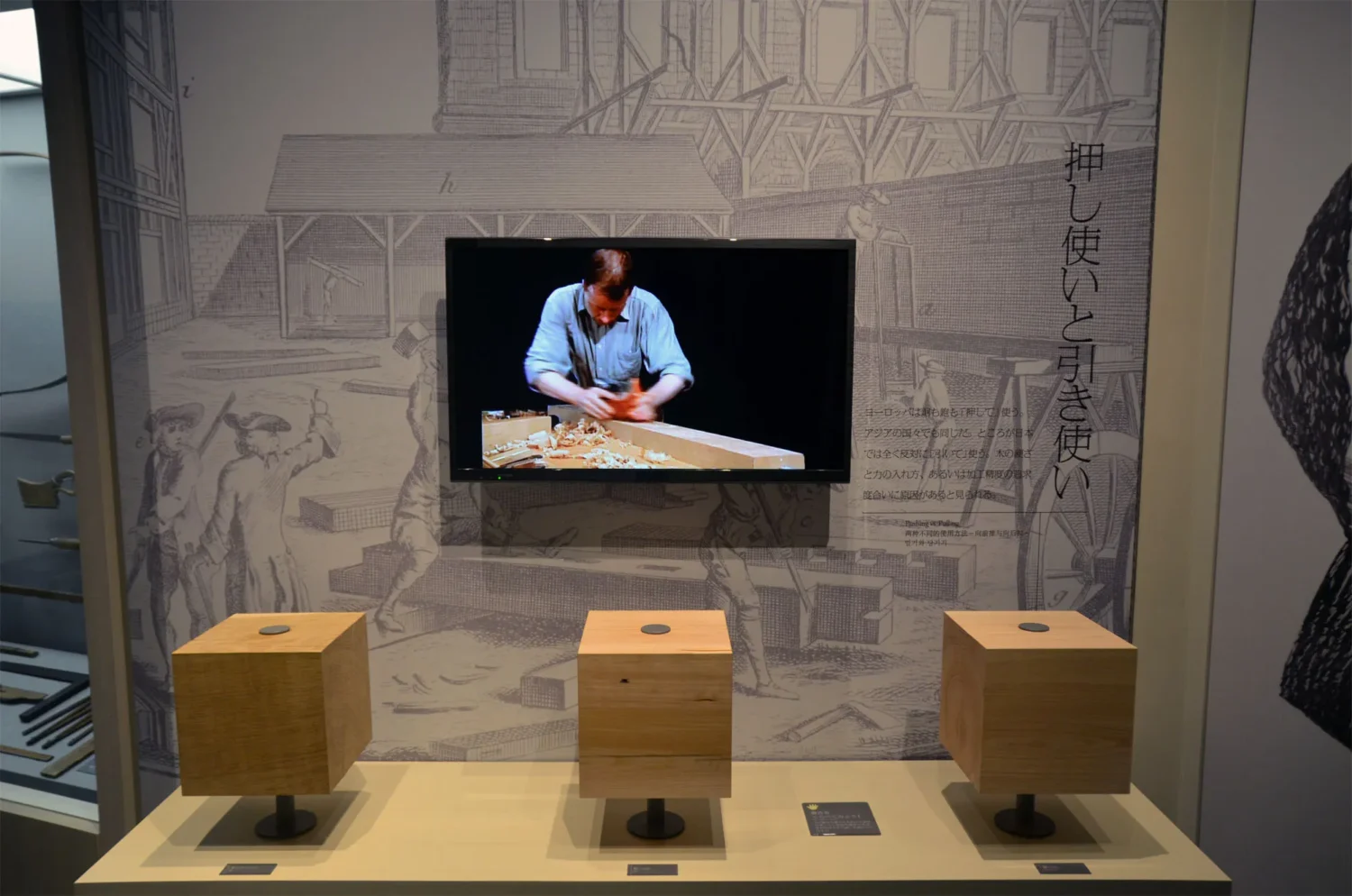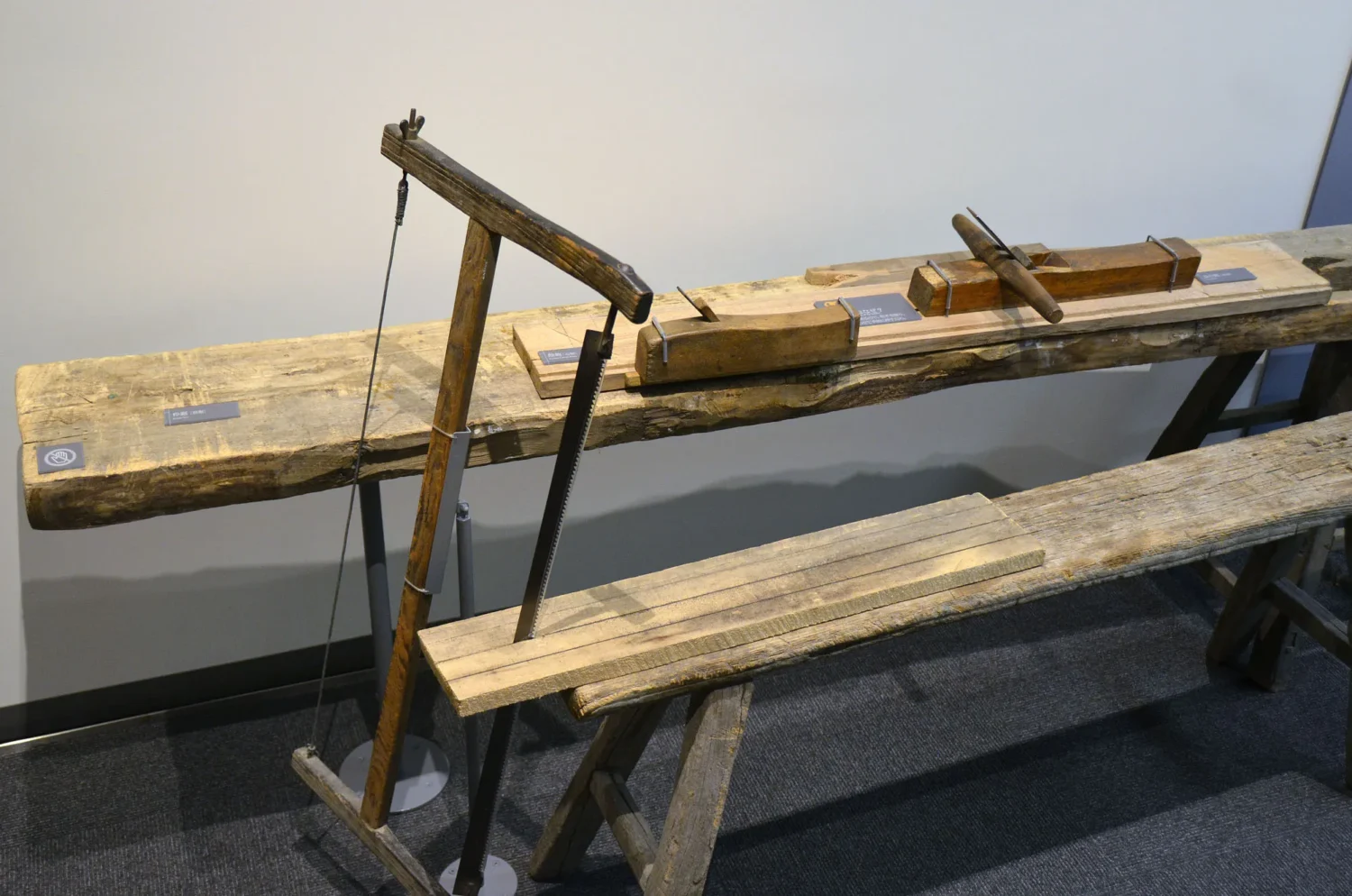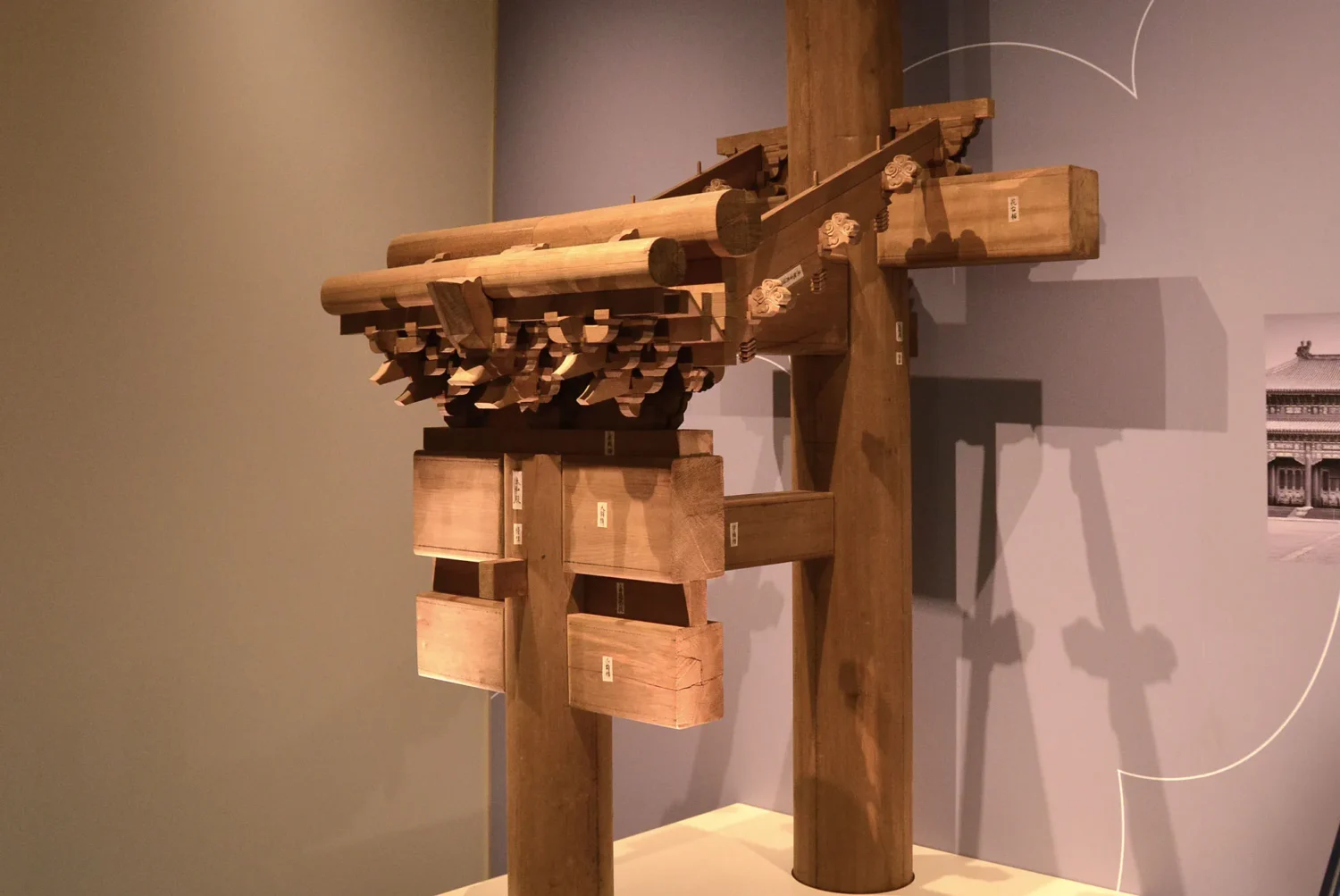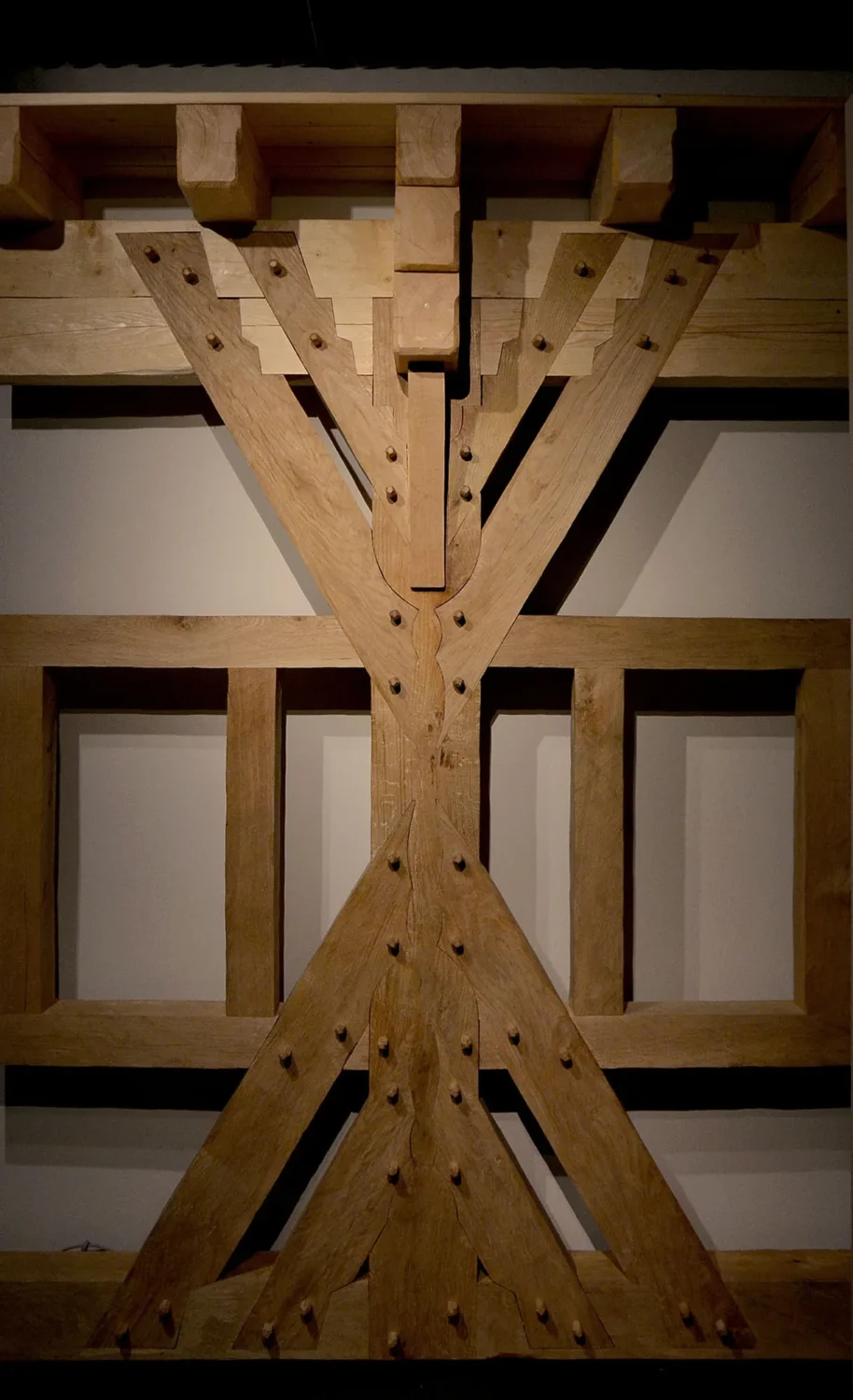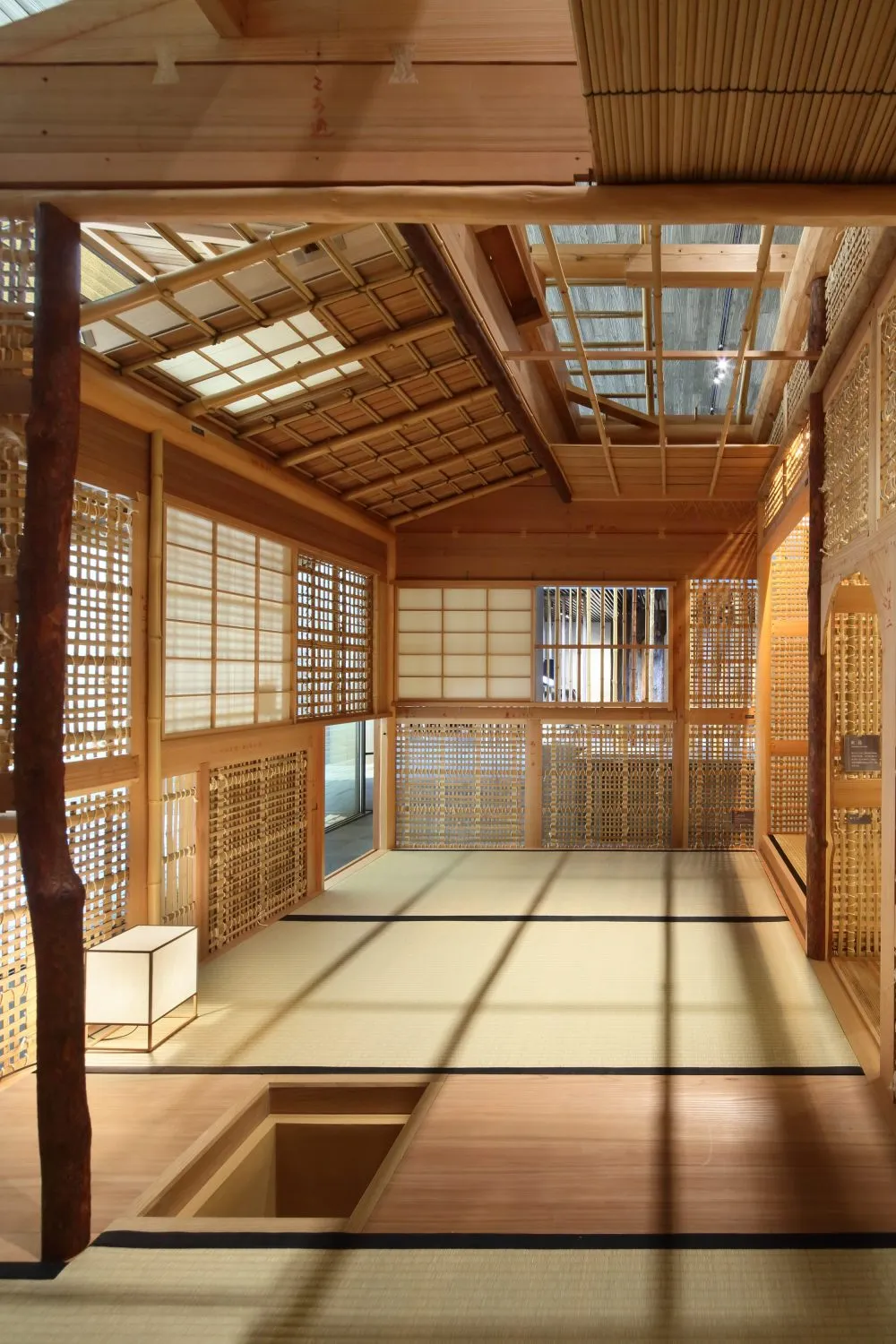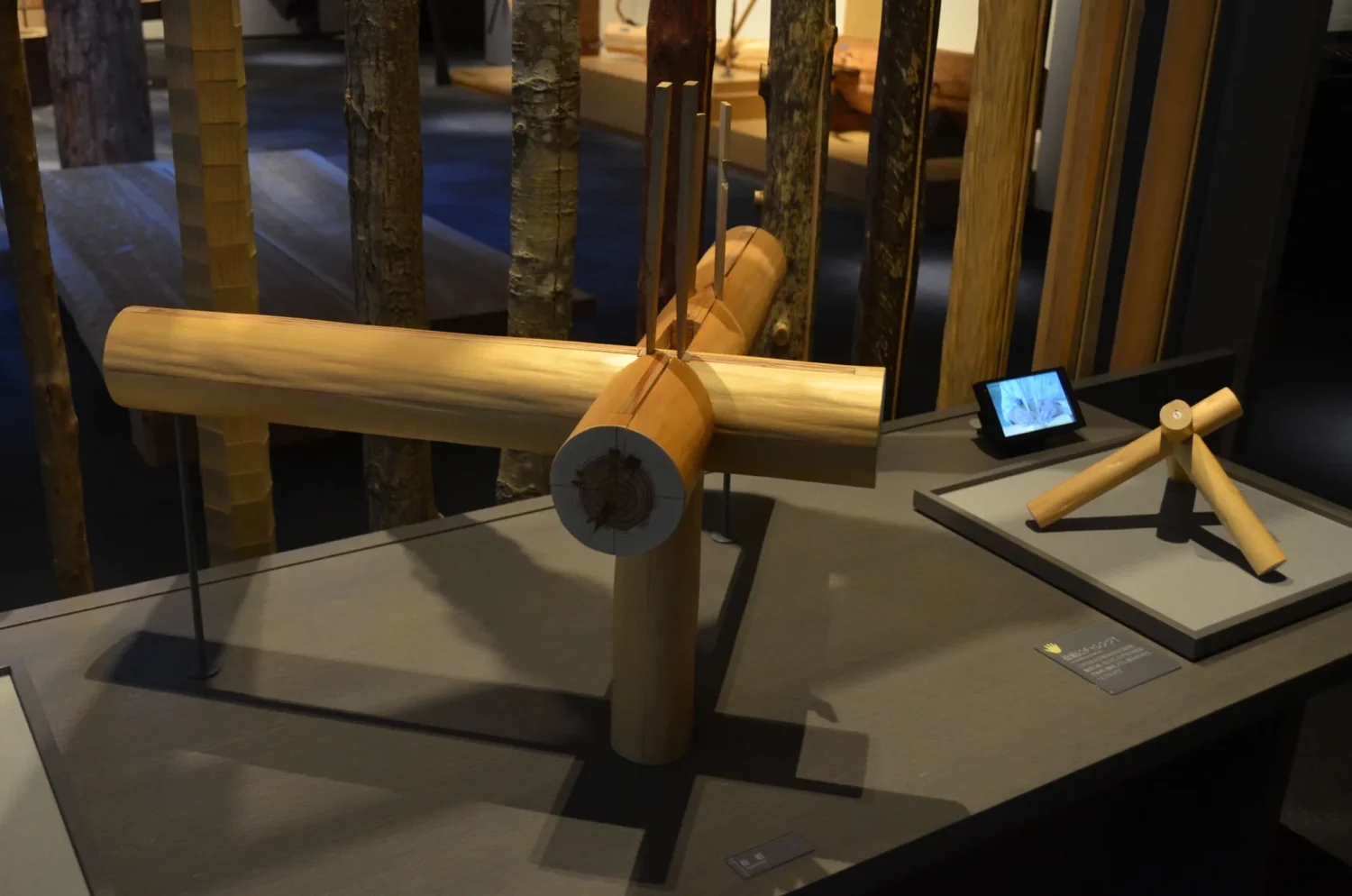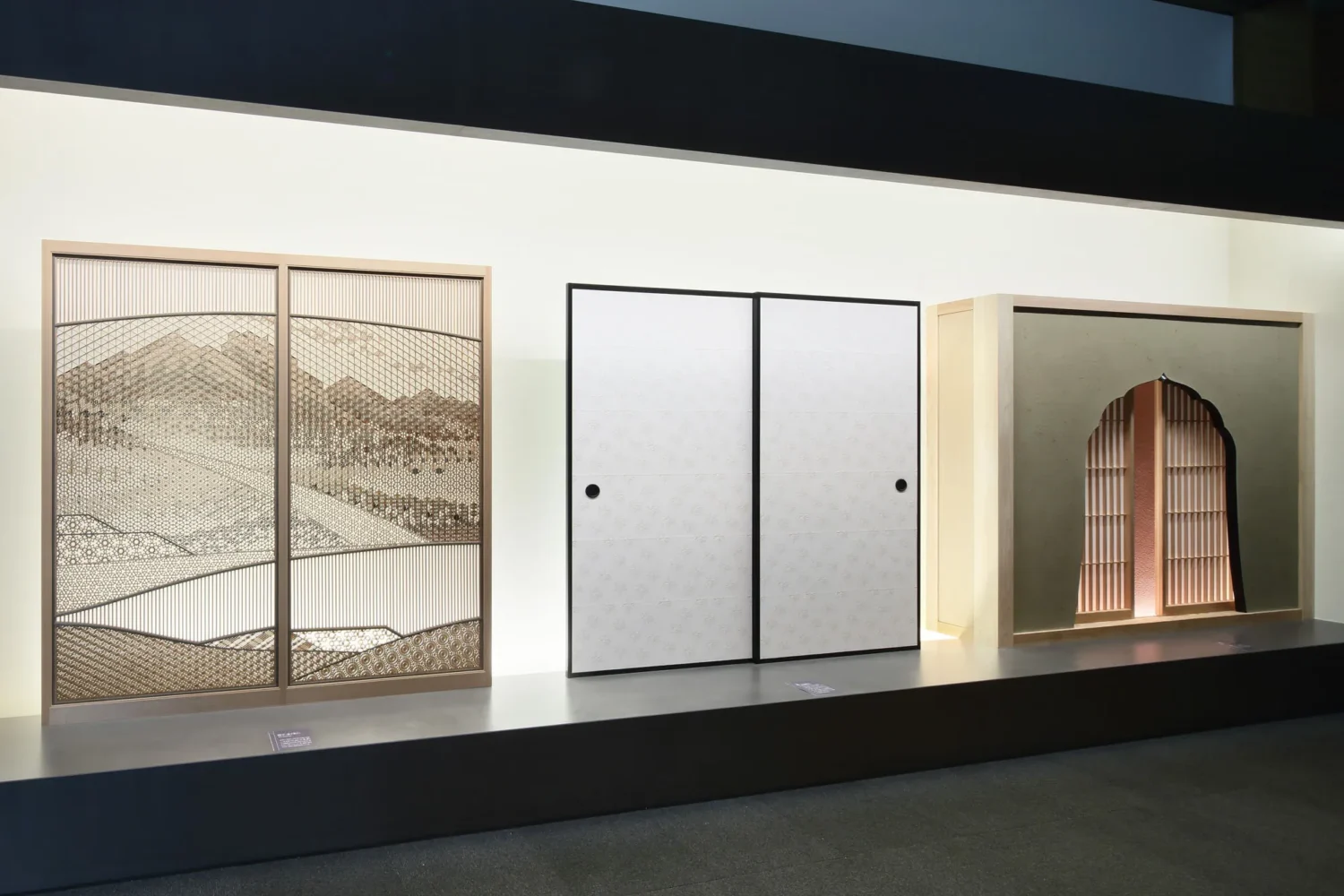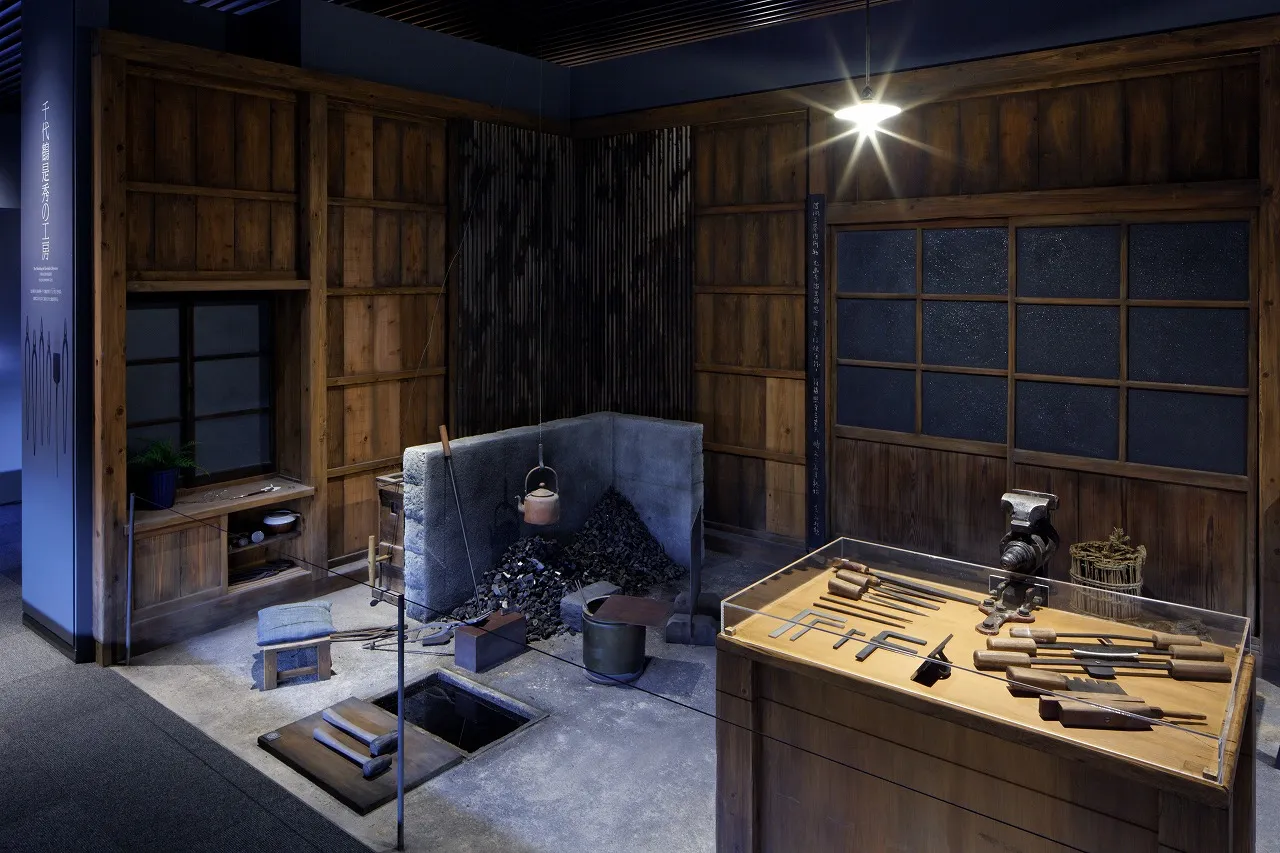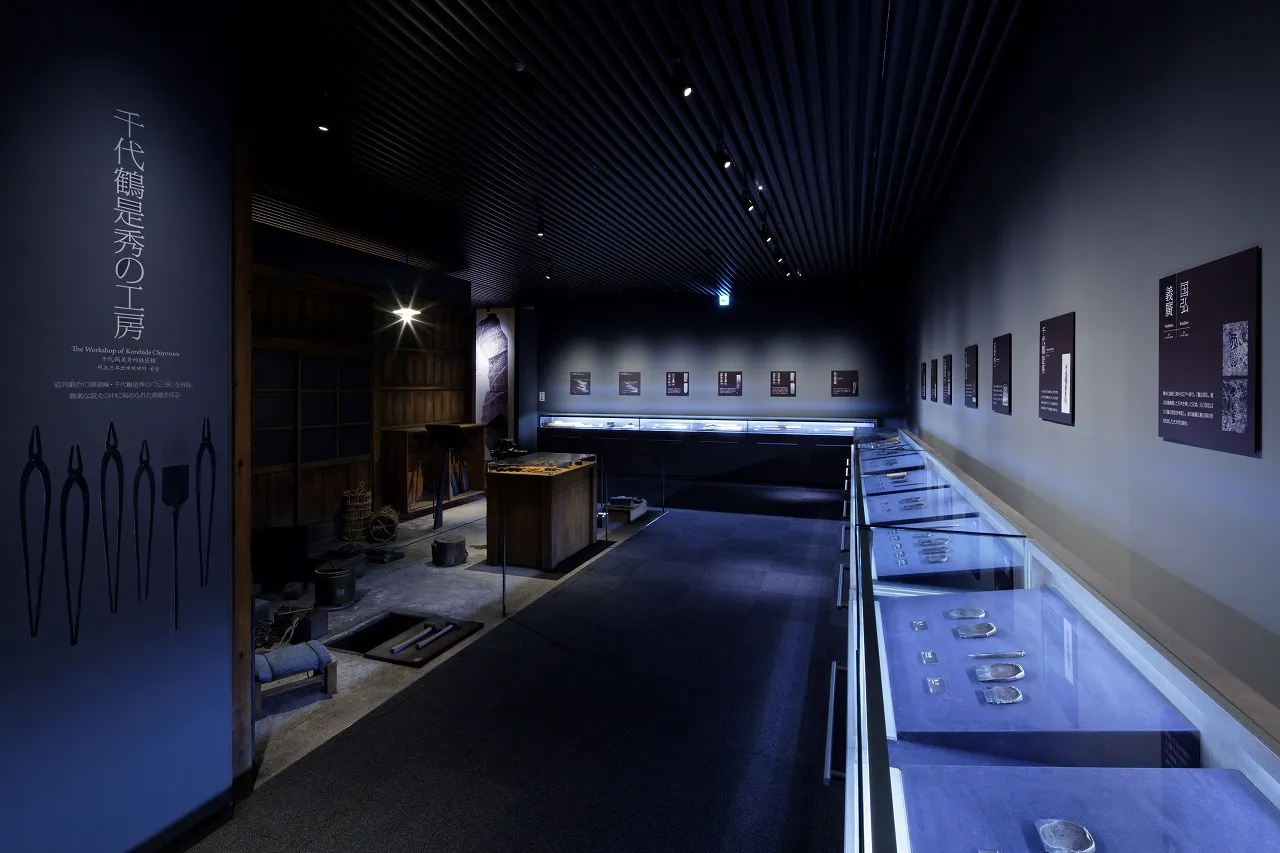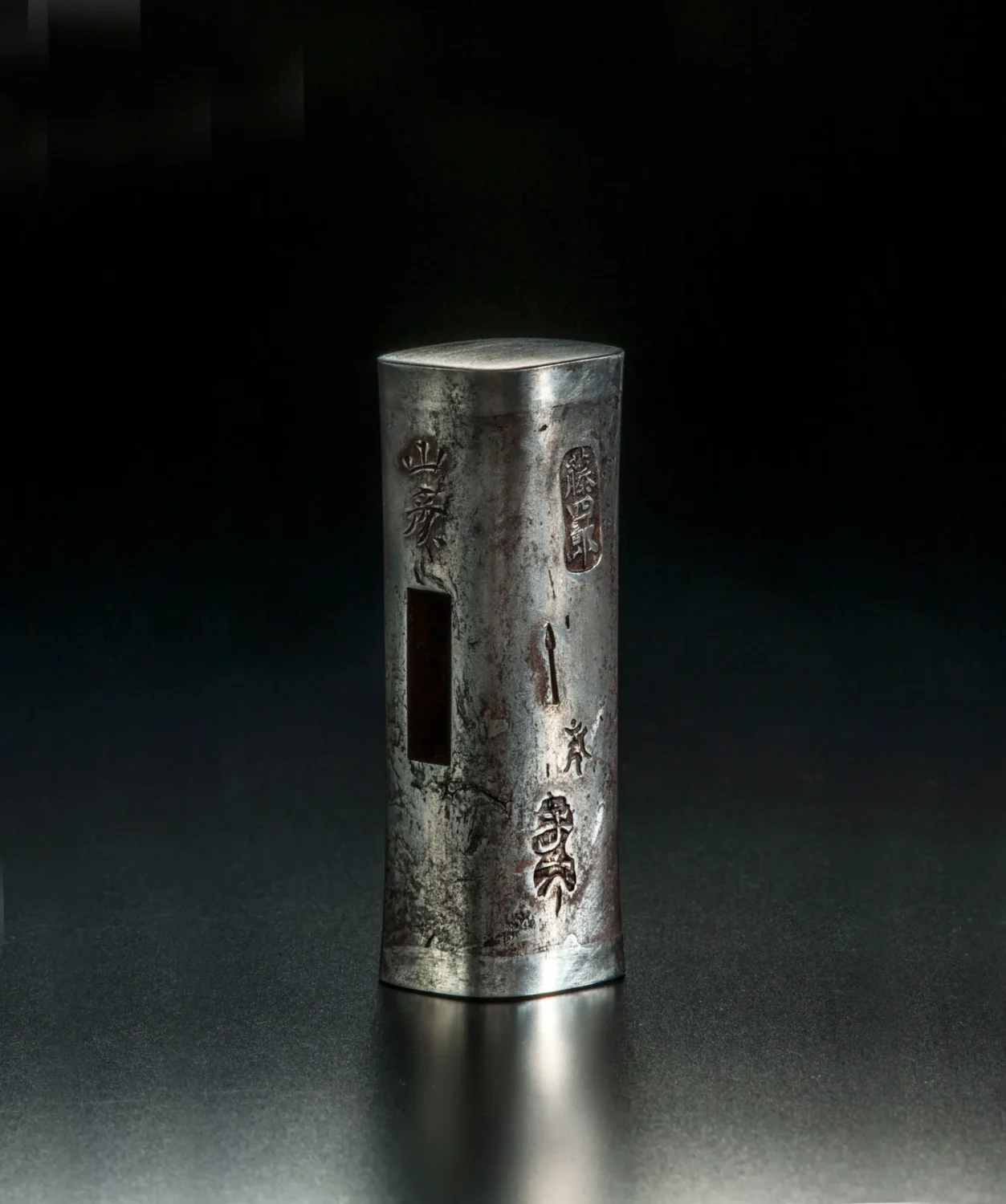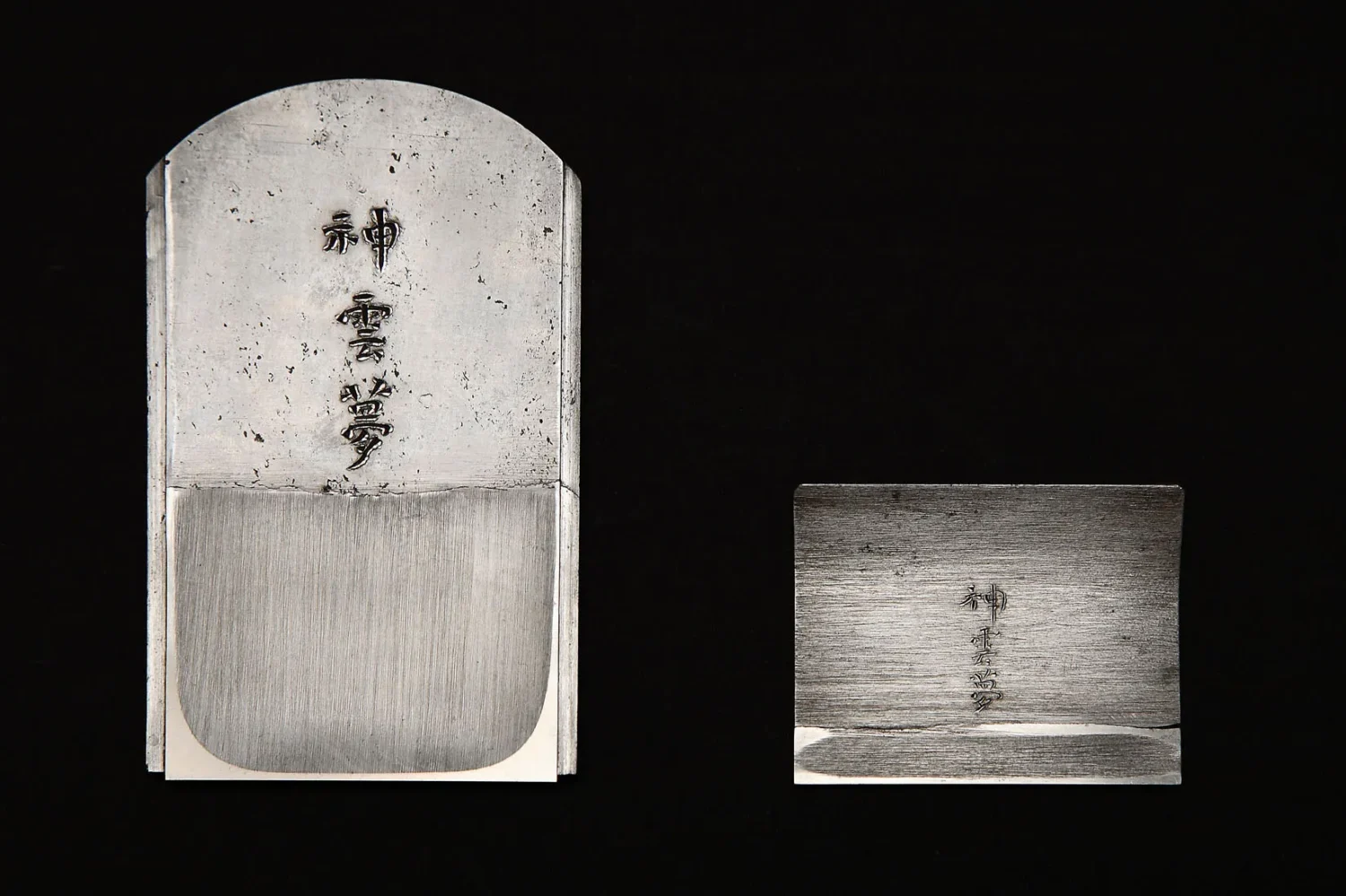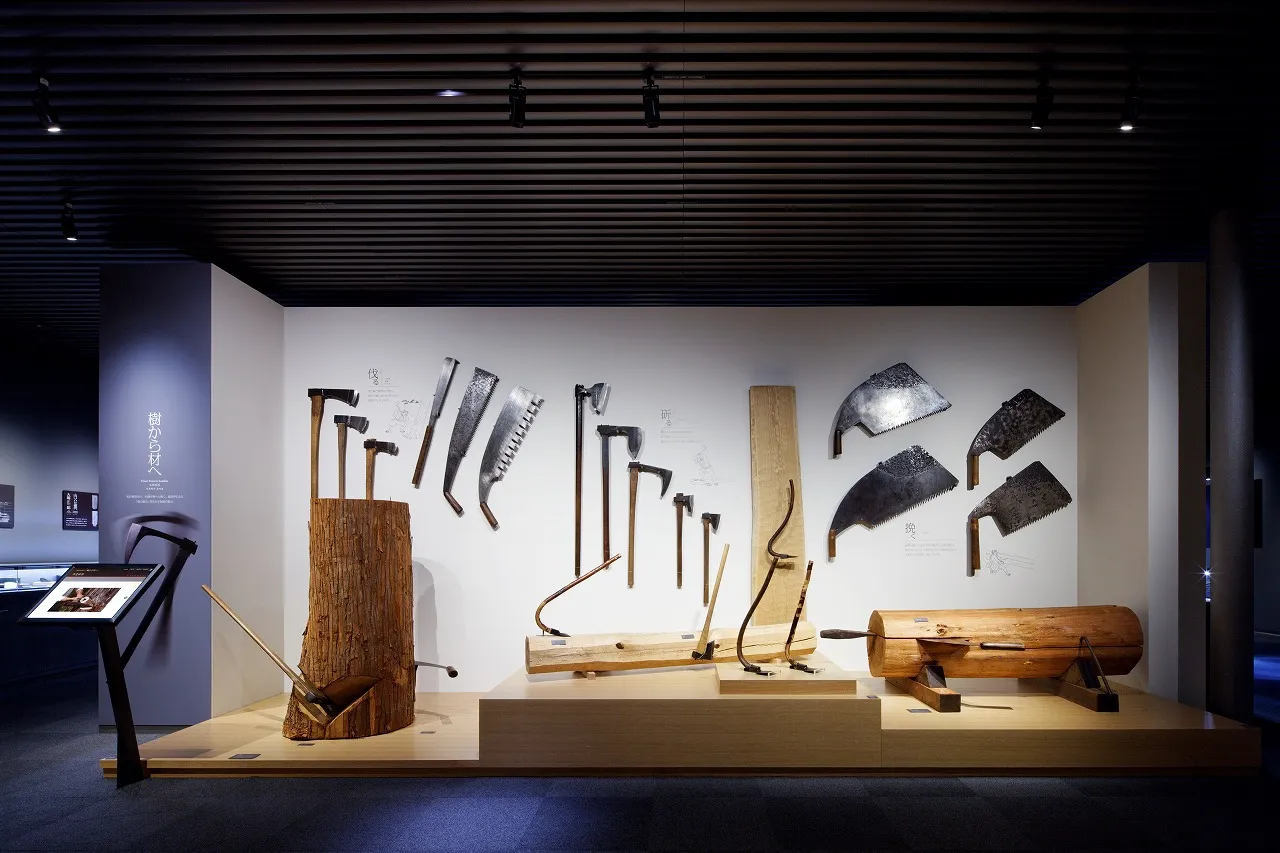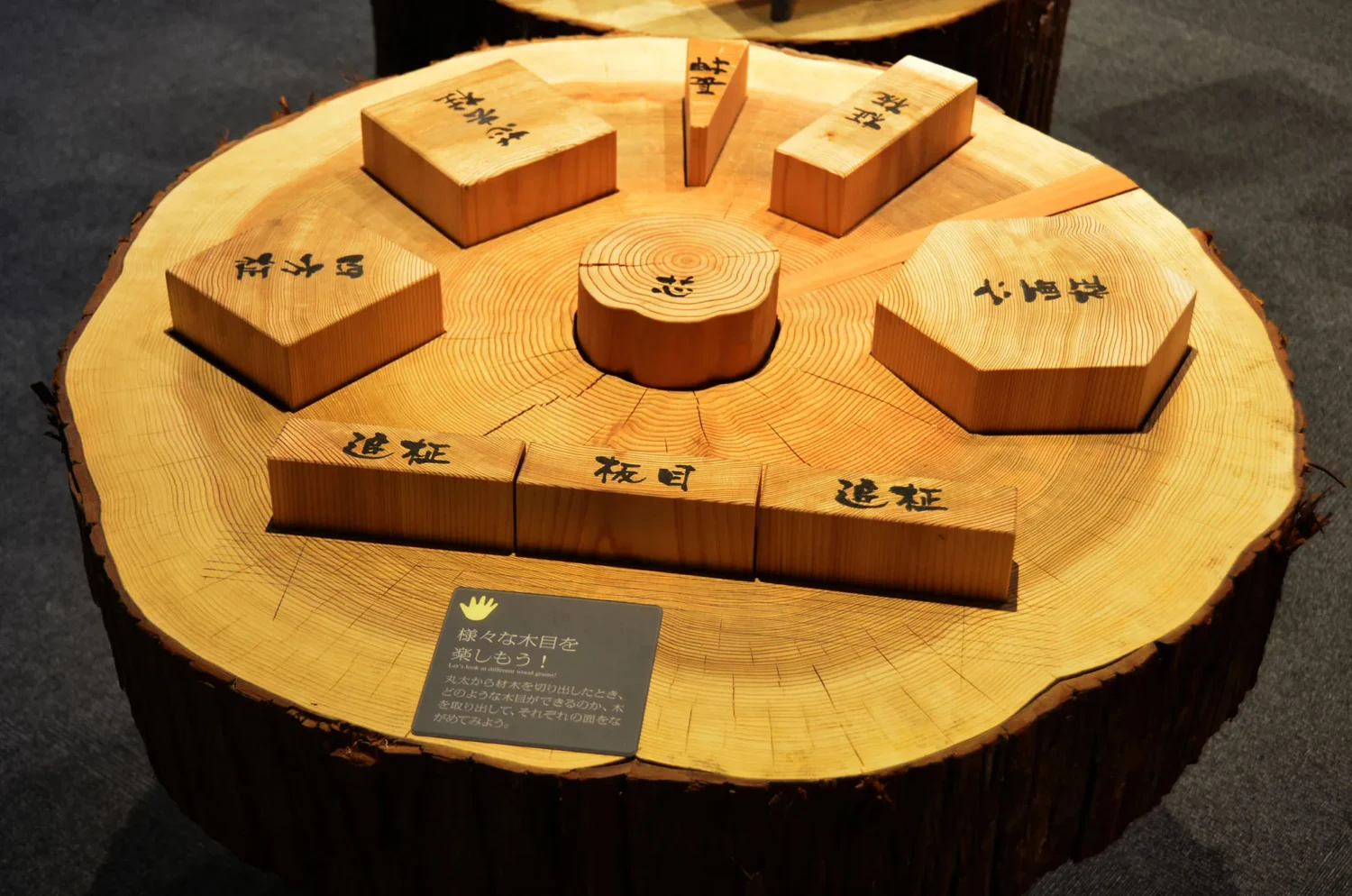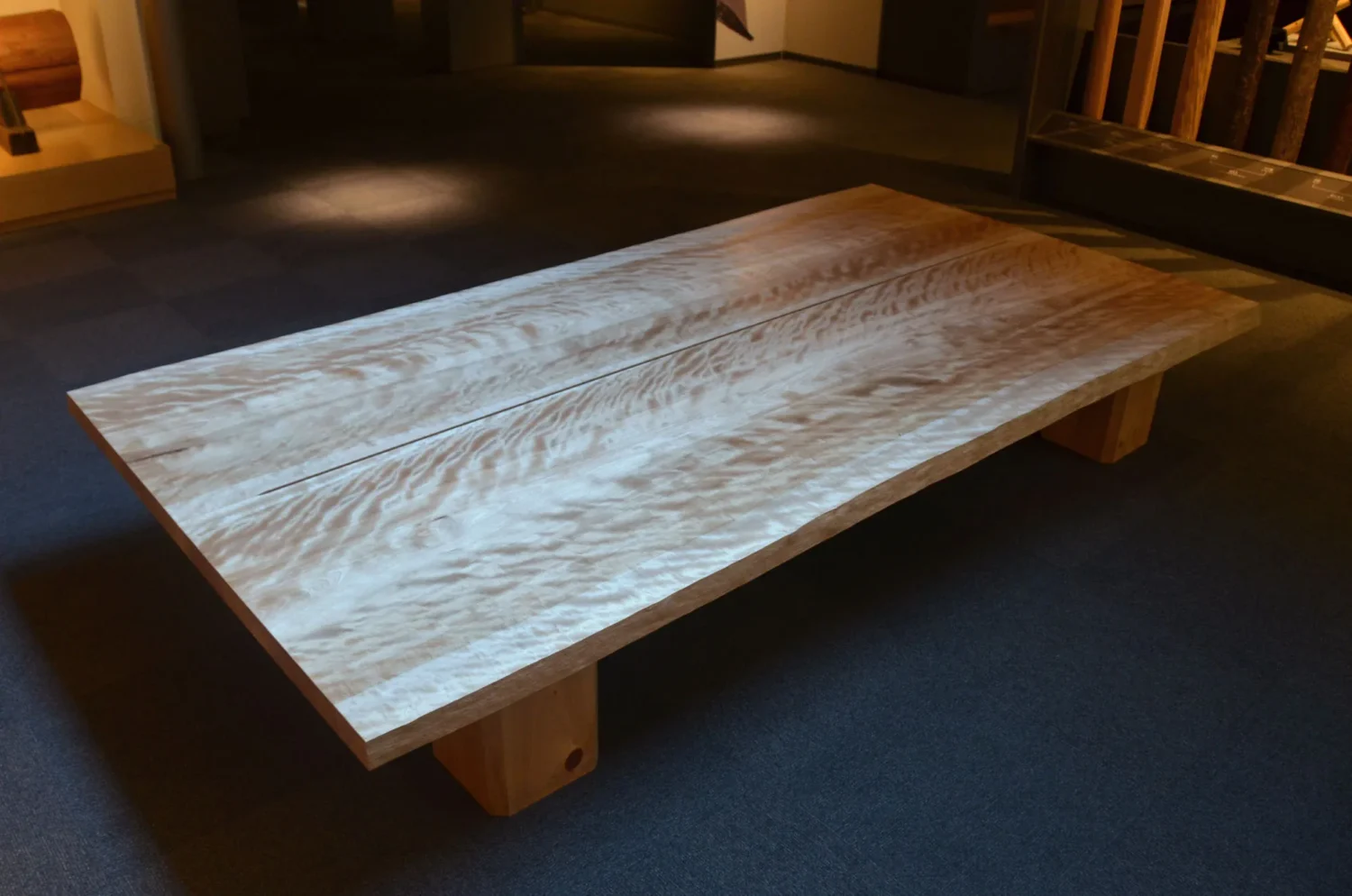From the exhibition divided into seven corners, you will be able to feel the spread and richness of the world around carpentry tools. "A Journey through History", "Tools and Handwork" and "Tools Around the World" which introduce carpenter History of Tools, types and mechanisms, and "Exquisite Works of Master Craftsmen" and "The Traditional Beauty of Japanese Wa" where you can feel the beauty of tools and handicrafts. "Learning from a Master Carpenter" conveys the heart of manufacturing through the work of the master. "Making the Most of Wood" where you can see many wisdoms that make full use of trees. And a place for more people to meet new tools…With that in mind, there are plenty of exhibits that resonate with the five senses, such as video, audio guide systems, hands-on exhibitions that can smell the scent of wood and actually touch them.
1
A Journey through History
Japanese carpentry tools that have been walking along with the development of wooden architecture. History of Tools, from prehistoric times to modern times, will be interpreted in an interesting and easy-to-understand manner with real and restored materials, powerful large models, emakimono, and abundant video materials in the background of architectural history.
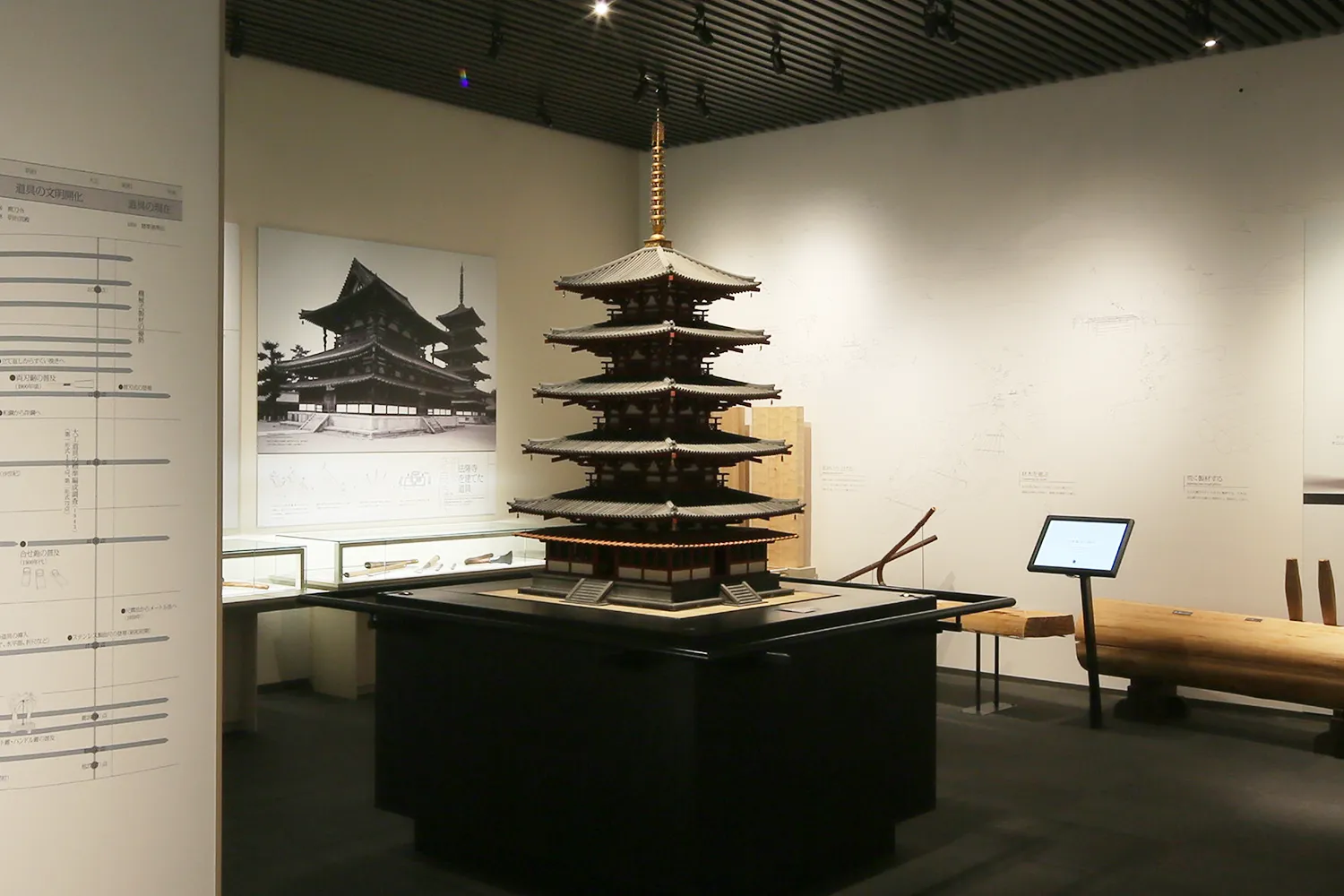
2
Learning from a Master Carpenter
A carpenter ridge that unites various craftsmen with trained leadership and builds architecture. There are many places to learn about their skills and minds for modern manufacturing and organization building. We will introduce the charm through powerful models and drawings that explain the actual work.

3
Tools and Handwork
Even if you say a chisel or plane, there are things of various sizes and shapes. The carpenters used them skillfully according to the work. Here, we will introduce the types, mechanisms, and usage of Japanese carpentry tools that are rare in the world, which are unique and diverse.
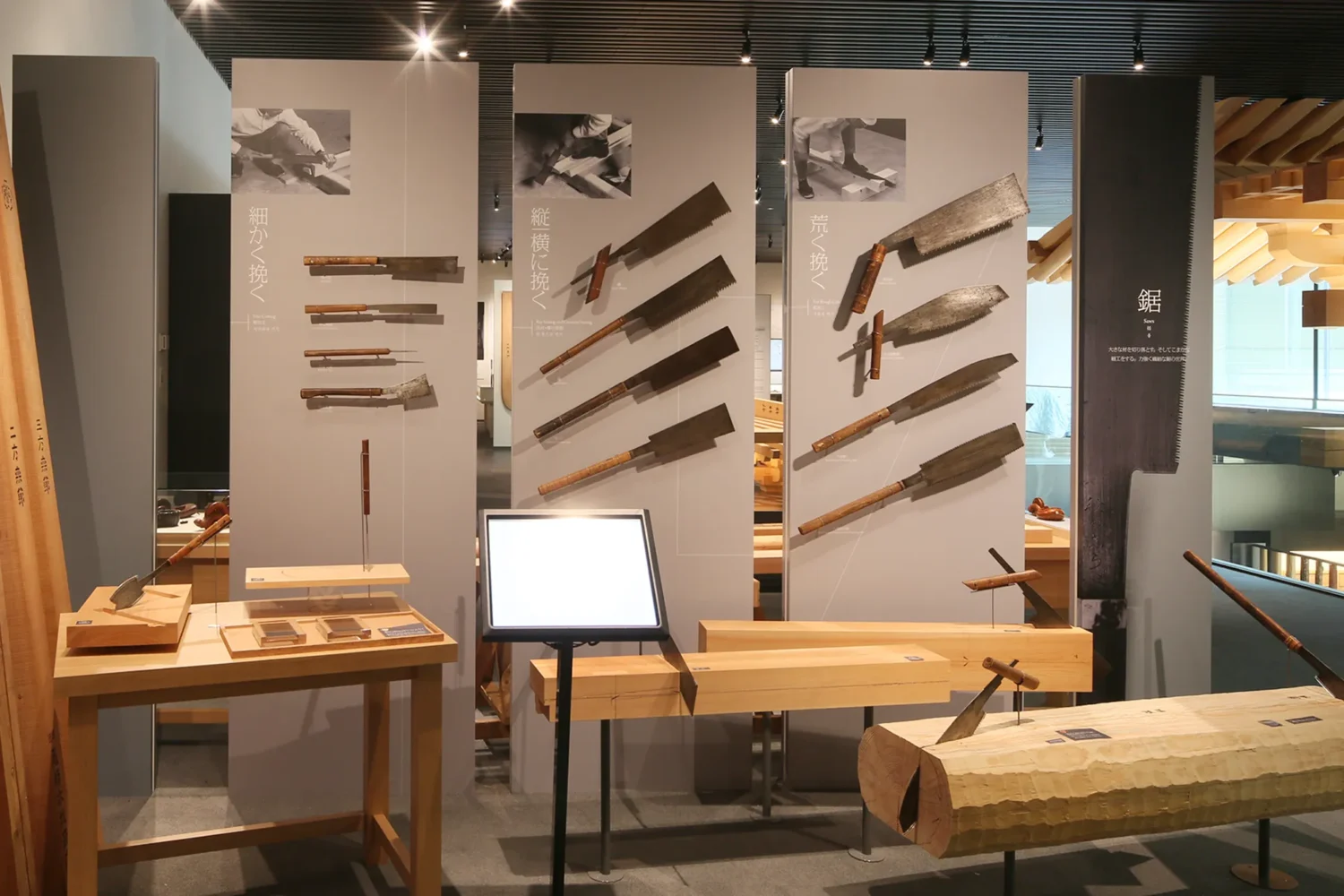
4
Tools Around the World
The shape and usage of carpentry tools are different between Japan using soft wood and overseas using hard wood. Here we will exhibit carpentry tools from China and Europe. In addition to videos and architectural models that show how to use tools, we will explain the difference between carpentry tools in Japan and overseas in an easy-to-understand manner.
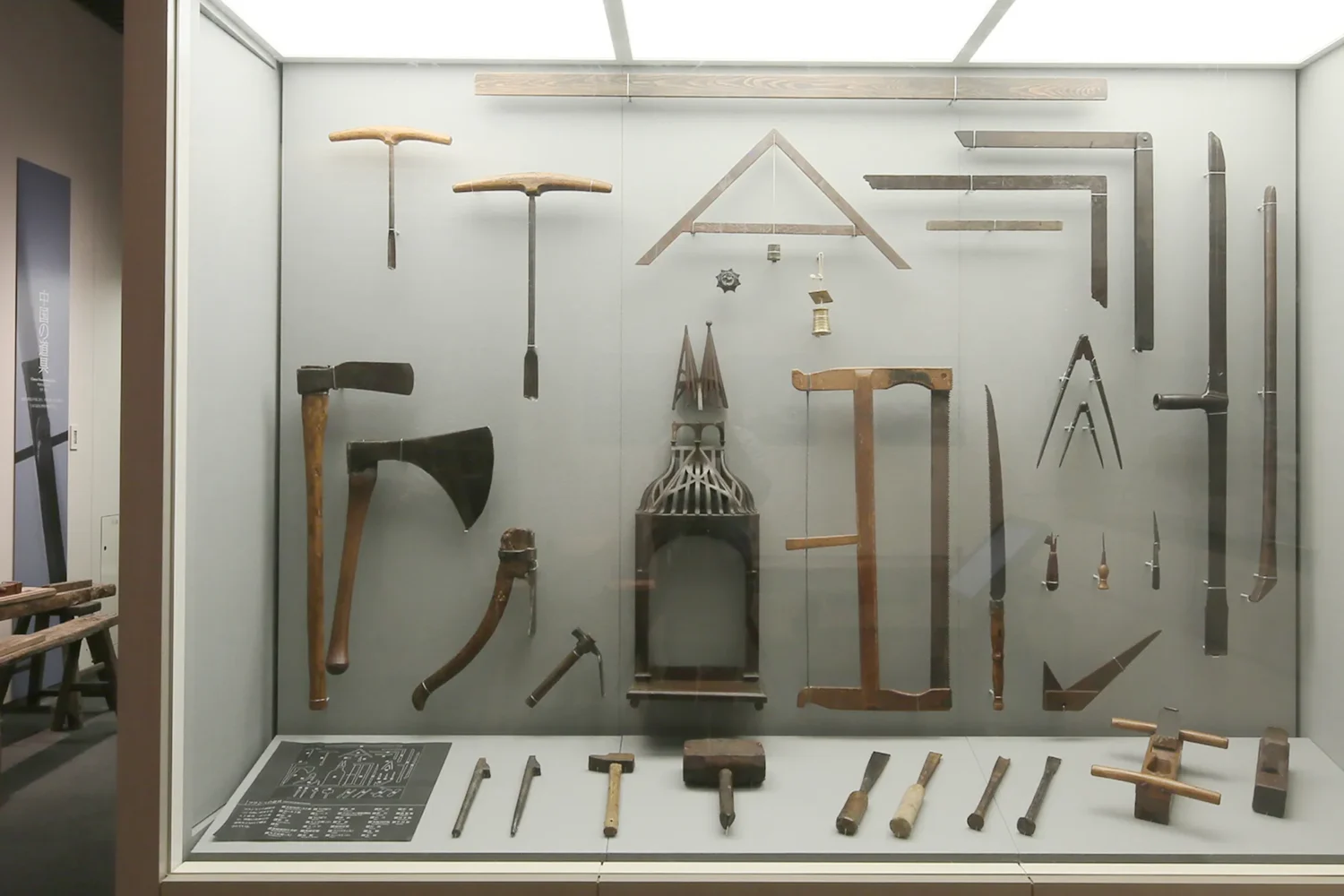
5
The Traditional Beauty of Japanese Wa
In Japan, there are still craftsmen who have the skills and sensibility to create the ultimate beauty through handwork. Please enjoy the world of beautiful traditional beauty that is proud of through a full-scale model of the tea room, elaborate kumiko work, karagami sliding doors with mica sliding doors, and earth walls made of natural materials.
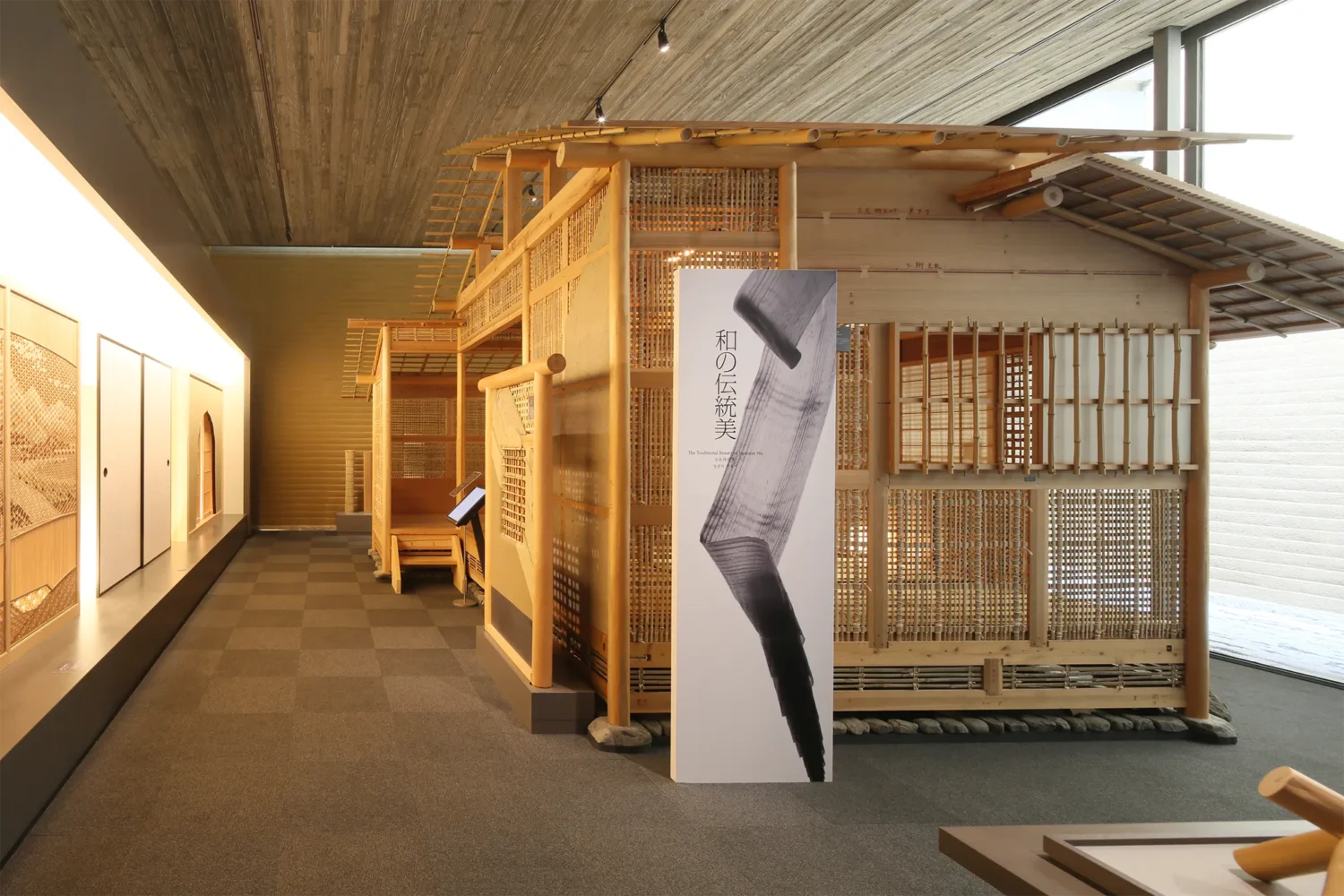
6
Exquisite Works of Master Craftsmen
The shine of "beauty" released by excellent carpentry tools. The blacksmiths who have a name in history cut poetic inscriptions on tools and elaborated artistic designs with their reliable skills and refined sensitivity. We invite you to a deep world of tool culture that has been extremely beautiful.

7
Making the Most of Wood
Trees have a personality like a person. In order to maximize its nature, the masters read the habit of wood and use it in the right place. Numerous wisdom to make full use of the precious forest blessings contained in hand tools. While enjoying the expression of a beautiful tree, you will approach the skills of a craftsman who reads wood.
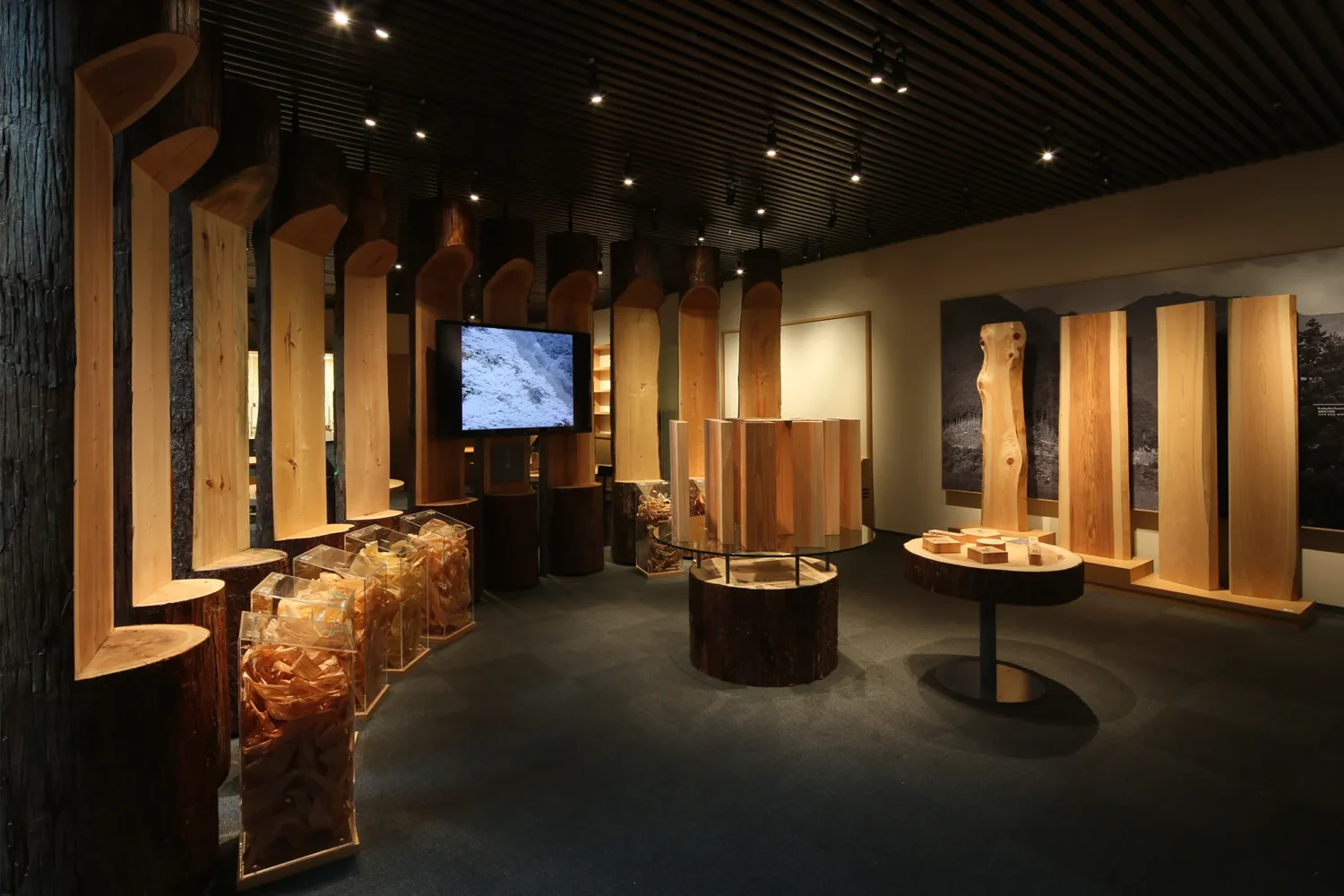
Basic information
Special Exhibition
Permanent exhibition
